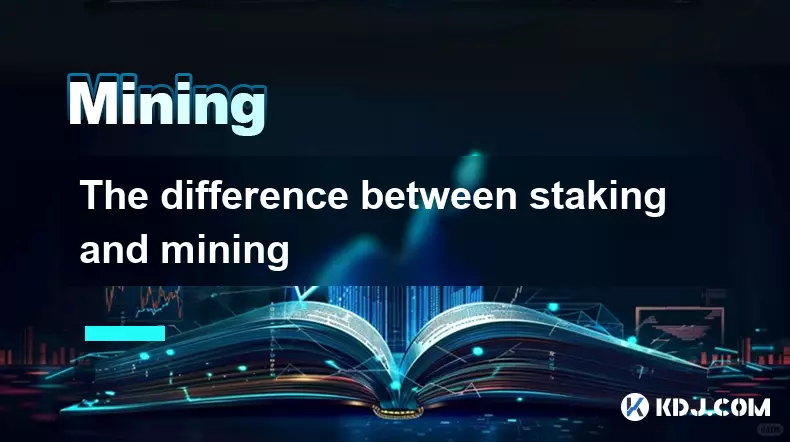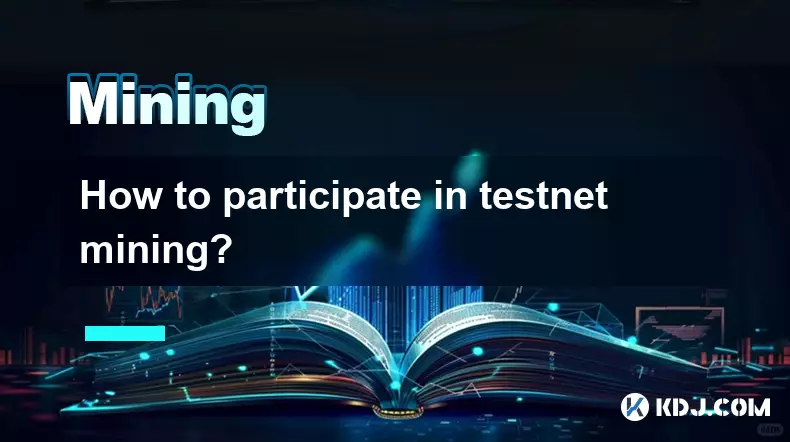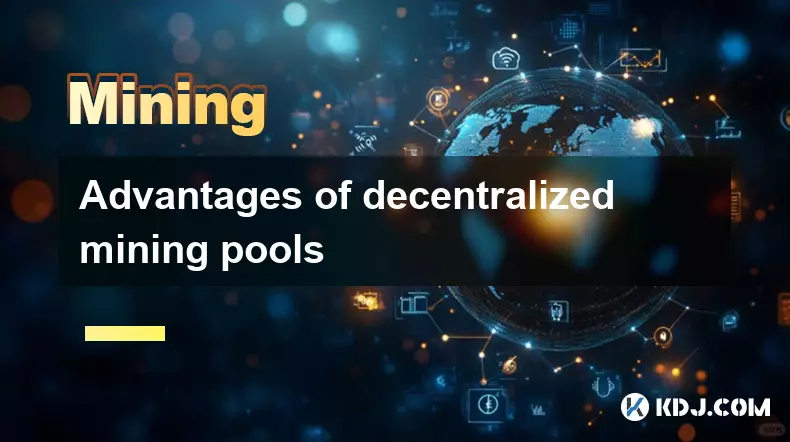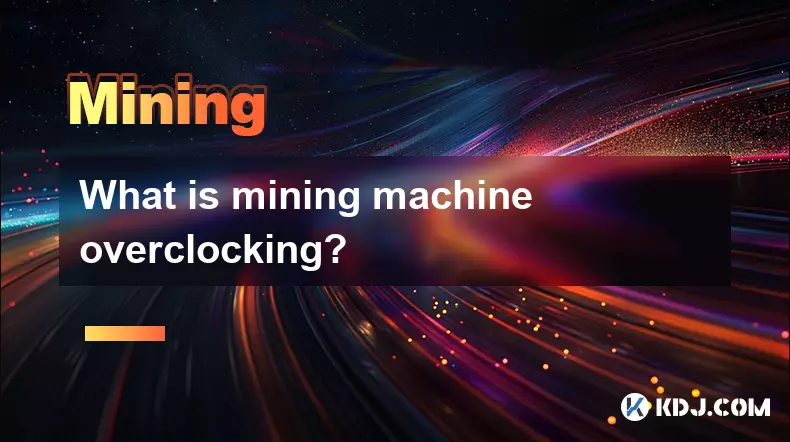-
 bitcoin
bitcoin $122090.672462 USD
1.59% -
 ethereum
ethereum $4493.758974 USD
0.56% -
 xrp
xrp $3.033145 USD
0.65% -
 tether
tether $1.000629 USD
0.00% -
 bnb
bnb $1169.854250 USD
7.07% -
 solana
solana $230.954786 USD
-0.19% -
 usd-coin
usd-coin $0.999785 USD
0.00% -
 dogecoin
dogecoin $0.256108 USD
-1.12% -
 tron
tron $0.342333 USD
-0.12% -
 cardano
cardano $0.859632 USD
-0.10% -
 hyperliquid
hyperliquid $48.932146 USD
-2.25% -
 chainlink
chainlink $22.345466 USD
-1.29% -
 ethena-usde
ethena-usde $1.000217 USD
-0.03% -
 avalanche
avalanche $31.203456 USD
1.93% -
 sui
sui $3.579145 USD
1.05%
What are the differences between mining on Windows vs. Linux?
Linux offers superior resource efficiency, stability, and security for cryptocurrency mining, making it ideal for high-performance, headless mining rigs despite a steeper learning curve.
Aug 06, 2025 at 11:29 pm

Overview of Cryptocurrency Mining Platforms
Cryptocurrency mining involves using computational power to solve complex cryptographic puzzles and validate transactions on a blockchain network. Miners are rewarded with newly minted coins for their efforts. The choice of operating system—Windows or Linux—plays a crucial role in the efficiency, stability, and performance of mining operations. Both platforms support mining software and hardware, but they differ significantly in resource usage, configuration flexibility, and long-term reliability. Understanding these differences is essential for miners aiming to optimize their setups.
System Resource Efficiency and Performance
One of the most notable distinctions between mining on Windows and Linux lies in system resource consumption. Windows typically uses more RAM and CPU cycles to manage background services, graphical interfaces, and automatic updates. This overhead can reduce the available resources for mining applications, especially on machines with limited hardware. In contrast, Linux distributions—particularly lightweight versions like Ubuntu Server or Debian—consume significantly fewer system resources. This allows nearly all available processing power to be dedicated to mining tasks.
- Linux runs efficiently with minimal background processes
- Windows GUI and system services consume additional CPU and memory
- Linux can be installed without a desktop environment, reducing overhead
- Windows may require disabling visual effects and background apps to improve performance
For miners operating multiple rigs or using older hardware, the reduced footprint of Linux can lead to measurable gains in hashrate stability and uptime.
Hardware Compatibility and Driver Support
Both operating systems support major mining hardware, including GPUs from NVIDIA and AMD, as well as ASIC devices. However, the way drivers are installed and managed varies significantly.
- On Windows, GPU drivers are typically installed through executable files provided by NVIDIA or AMD. These are user-friendly and automatically configure most settings.
- On Linux, drivers often require manual installation via command-line tools such as apt or yum, and may involve configuring kernel modules like nvidia-dkms or amdgpu-pro.
While Windows offers plug-and-play simplicity, Linux provides greater control over driver versions and kernel integration. Some advanced miners prefer Linux because it allows them to run specific driver versions optimized for mining, avoiding unnecessary bloat from display management features.
Additionally, Linux supports headless operation (without a monitor), which is ideal for remote mining farms. Windows can also run headless, but it often requires additional configuration and may still initiate unwanted updates.
Configuration and Mining Software Flexibility
Mining software such as CGMiner, BFGMiner, PhoenixMiner, and GMiner are available on both platforms, but their configuration and automation differ.
- Linux offers powerful scripting capabilities through bash, allowing miners to automate startup routines, monitor temperatures, and restart processes if they fail.
- Windows relies on batch files or PowerShell scripts, which are less efficient and more prone to permission issues.
For example, a miner on Linux can create a script that:
- Checks GPU temperature using nvidia-smi
- Restarts the miner if the hashrate drops below a threshold
- Logs performance data to a file for later analysis
This level of automation is more cumbersome to implement on Windows, where background tasks may be interrupted by system updates or antivirus software. Furthermore, Linux allows direct access to system logs and hardware sensors, enabling real-time diagnostics that are harder to achieve on Windows.
Security and System Stability
Security is a critical concern in mining operations, especially when rigs are connected to the internet for pool mining. Linux is generally considered more secure due to its permission model and lower attack surface. Most malware targets Windows, making it more vulnerable to cryptojacking and unauthorized access.
- Linux systems can be hardened by disabling unused services and using firewalls like ufw
- Windows often requires third-party antivirus software, which consumes resources
- Linux allows precise user permission control, reducing the risk of accidental misconfigurations
System stability is another advantage of Linux. It can run for months without rebooting, even under heavy GPU load. Windows, on the other hand, may prompt reboots after updates or experience crashes due to driver conflicts. For continuous mining operations, this reliability is a significant benefit.
Setup and Maintenance Complexity
While Linux offers superior performance and control, it has a steeper learning curve. New miners may find it challenging to navigate the command line, edit configuration files, or troubleshoot boot issues.
- Installing a Linux mining rig requires familiarity with partitioning, package managers, and terminal commands
- Windows installation is more intuitive, with graphical installers and widespread user support
- Remote access on Linux is typically done via SSH, which is lightweight and secure
- Windows uses Remote Desktop, which consumes more bandwidth and system resources
Despite the initial complexity, experienced miners often migrate to Linux for its long-term benefits. Once configured, a Linux mining rig requires minimal intervention and can be managed remotely with ease.
Frequently Asked Questions
Can I use the same mining software on both Windows and Linux?Yes, most major mining software supports both operating systems. However, the configuration files and command-line arguments may differ slightly. Always refer to the official documentation for OS-specific instructions.
Is it possible to mine with ASICs on Linux?Absolutely. ASIC miners like those from Bitmain or MicroBT connect via Ethernet or USB and are controlled through mining software such as CGMiner or BFGMiner, both of which are fully compatible with Linux.
Do I need a GUI to mine on Linux?No. In fact, mining on Linux is often more efficient without a GUI. Server editions of Ubuntu or CentOS run in text mode and can be managed entirely through the terminal or SSH.
Will overclocking my GPU work the same way on both systems?Overclocking tools differ. On Windows, you can use MSI Afterburner or AMD Radeon Software. On Linux, tools like nvidia-settings or AMDGPU-PRO are used via command line or configuration files. The process is more technical on Linux, but offers finer control.
Disclaimer:info@kdj.com
The information provided is not trading advice. kdj.com does not assume any responsibility for any investments made based on the information provided in this article. Cryptocurrencies are highly volatile and it is highly recommended that you invest with caution after thorough research!
If you believe that the content used on this website infringes your copyright, please contact us immediately (info@kdj.com) and we will delete it promptly.
- BlockDAG, DOGE, HYPE Sponsorship: Crypto Trends Shaping 2025
- 2025-10-01 00:25:13
- Deutsche Börse and Circle: A StableCoin Adoption Powerhouse in Europe
- 2025-10-01 00:25:13
- BlockDAG's Presale Buzz: Is It the Crypto to Watch in October 2025?
- 2025-10-01 00:30:13
- Bitcoin, Crypto, and IQ: When Genius Meets Digital Gold?
- 2025-10-01 00:30:13
- Stablecoins, American Innovation, and Wallet Tokens: The Next Frontier
- 2025-10-01 00:35:12
- NBU, Coins, and Crypto in Ukraine: A New Yorker's Take
- 2025-10-01 00:45:14
Related knowledge

The difference between staking and mining
Sep 24,2025 at 05:18am
Understanding Staking in the Cryptocurrency Ecosystem1. Staking involves holding funds in a cryptocurrency wallet to support the operations of a block...

How to participate in testnet mining?
Sep 22,2025 at 09:18am
Understanding Testnet Mining in the Crypto Ecosystem1. Testnet mining is a method used by blockchain developers to simulate real-world conditions on a...

How to dispose of abandoned mining machines?
Sep 19,2025 at 08:19pm
Assessing the Condition of Abandoned Mining Rigs1. Begin by inspecting each mining machine for visible damage, corrosion, or missing components. Machi...

How to identify high-quality mining pools?
Sep 21,2025 at 03:19pm
Reputation and Track Record1. A mining pool’s reputation is built over time through consistent performance and transparency. Pools that have operated ...

Advantages of decentralized mining pools
Sep 20,2025 at 04:36pm
Enhanced Security and Resistance to Censorship1. Decentralized mining pools operate on blockchain-based smart contracts, eliminating the need for a ce...

What is mining machine overclocking?
Sep 21,2025 at 07:19pm
Understanding Mining Machine Overclocking1. Mining machine overclocking refers to the process of increasing the operating frequency of a cryptocurrenc...

The difference between staking and mining
Sep 24,2025 at 05:18am
Understanding Staking in the Cryptocurrency Ecosystem1. Staking involves holding funds in a cryptocurrency wallet to support the operations of a block...

How to participate in testnet mining?
Sep 22,2025 at 09:18am
Understanding Testnet Mining in the Crypto Ecosystem1. Testnet mining is a method used by blockchain developers to simulate real-world conditions on a...

How to dispose of abandoned mining machines?
Sep 19,2025 at 08:19pm
Assessing the Condition of Abandoned Mining Rigs1. Begin by inspecting each mining machine for visible damage, corrosion, or missing components. Machi...

How to identify high-quality mining pools?
Sep 21,2025 at 03:19pm
Reputation and Track Record1. A mining pool’s reputation is built over time through consistent performance and transparency. Pools that have operated ...

Advantages of decentralized mining pools
Sep 20,2025 at 04:36pm
Enhanced Security and Resistance to Censorship1. Decentralized mining pools operate on blockchain-based smart contracts, eliminating the need for a ce...

What is mining machine overclocking?
Sep 21,2025 at 07:19pm
Understanding Mining Machine Overclocking1. Mining machine overclocking refers to the process of increasing the operating frequency of a cryptocurrenc...
See all articles










































































